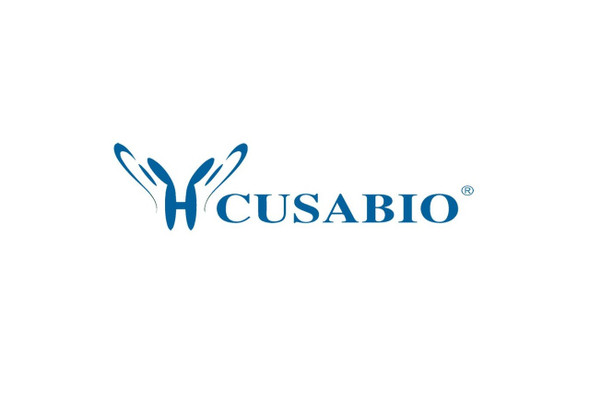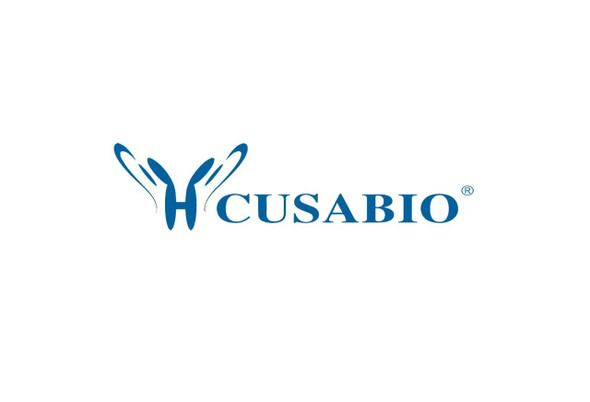Cusabio Bos taurus Recombinants
Recombinant Bovine Keratin, type I cytoskeletal 17 (KRT17) | CSB-EP012516BO
- SKU:
- CSB-EP012516BO
- Availability:
- 13 - 23 Working Days
Description
Recombinant Bovine Keratin, type I cytoskeletal 17 (KRT17) | CSB-EP012516BO | Cusabio
Alternative Name(s): Cytokeratin-17 ;CK-17Keratin-17 ;K17
Gene Names: KRT17
Research Areas: Others
Organism: Bos taurus (Bovine)
AA Sequence: MTTTIRHFSSGSIKGSSGLAGGSSRSCRVSGSLGGGSCRLGSAGGLGSGLGGSSYSSCYSFGSGGGYGSGGYVSGGYGGGFGGVDGLLVGGEKATMQNLNDRLASYLDKVRALEEANTELELKIRDWYQKQAPGPAPDYSSYFKTIEDLRNKIHTATVDNANLLLQIDNARLAADDFRTKFETEQALRVSVEADINGLRRVLDELTLARADLEMQIENLKEELAYLRKNHEEEMKALRGQVGGEINVEMDAAPGVDLSRILNEMRDQYEKMAEKNRKDAEDWFFSKTEELNREVATNSELVQSGKSEISELRRTLQALEIELQSQLSMKASLEGSLAETENRYCMQLSQIQGLIGSVEEQLAQLRCEMEQQNQEYKILLDVKTRLEQEIATYRRLLEGEDAHLTQYKTKEPVTTRQVRTIVEEVQDGRVISSREQVHQTSH
Source: E.coli
Tag Info: N-terminal 6xHis-SUMO-tagged
Expression Region: 1-441aa
Sequence Info: Full Length
MW: 64.7 kDa
Purity: Greater than 90% as determined by SDS-PAGE.
Relevance: Type I keratin involved in the formation and maintenance of various skin appendages, specifically in determining shape and orientation of hair. Required for the correct growth of hair follicles, in particular for the persistence of the anagen (growth) state. Modulates the function of TNF-alpha in the specific context of hair cycling. Regulates protein synthesis and epithelial cell growth through binding to the adapter protein SFN and by stimulating Akt/mTOR pathway. Involved in tissue repair. May be a marker of basal cell differentiation in complex epithelia and therefore indicative of a certain type of epithelial "st cells". Acts as a promoter of epithelial proliferation by acting a regulator of immune response in skin: promotes Th1/Th17-dominated immune environment contributing to the development of basaloid skin tumors. May act as an autoantigen in the immunopathogenesis of psoriasis, with certain peptide regions being a major target for autoreactive T-cells and hence causing their proliferation.
Reference: Characterization of 954 bovine full-CDS cDNA sequences.Harhay G.P., Sonstegard T.S., Keele J.W., Heaton M.P., Clawson M.L., Snelling W.M., Wiedmann R.T., Van Tassell C.P., Smith T.P.L.BMC Genomics 6:166-166(2005)
Storage: The shelf life is related to many factors, storage state, buffer ingredients, storage temperature and the stability of the protein itself. Generally, the shelf life of liquid form is 6 months at -20?/-80?. The shelf life of lyophilized form is 12 months at -20?/-80?.
Notes: Repeated freezing and thawing is not recommended. Store working aliquots at 4? for up to one week.
Function: Type I keratin involved in the formation and maintenance of various skin appendages, specifically in determining shape and orientation of hair. Required for the correct growth of hair follicles, in particular for the persistence of the anagen (growth) state. Modulates the function of TNF-alpha in the specific context of hair cycling. Regulates protein synthesis and epithelial cell growth through binding to the adapter protein SFN and by stimulating Akt/mTOR pathway. Involved in tissue repair. May be a marker of basal cell differentiation in complex epithelia and therefore indicative of a certain type of epithelial "stem cells". Acts as a promoter of epithelial proliferation by acting a regulator of immune response in skin
Involvement in disease:
Subcellular Location: Cytoplasm
Protein Families: Intermediate filament family
Tissue Specificity:
Paythway:
Form: Liquid or Lyophilized powder
Buffer: If the delivery form is liquid, the default storage buffer is Tris/PBS-based buffer, 5%-50% glycerol. If the delivery form is lyophilized powder, the buffer before lyophilization is Tris/PBS-based buffer, 6% Trehalose, pH 8.0.
Reconstitution: We recommend that this vial be briefly centrifuged prior to opening to bring the contents to the bottom. Please reconstitute protein in deionized sterile water to a concentration of 0.1-1.0 mg/mL.We recommend to add 5-50% of glycerol (final concentration) and aliquot for long-term storage at -20?/-80?. Our default final concentration of glycerol is 50%. Customers could use it as reference.
Uniprot ID: A1L595
HGNC Database Link: N/A
UniGene Database Link: UniGene
KEGG Database Link: KEGG
STRING Database Link: STRING
OMIM Database Link: N/A









